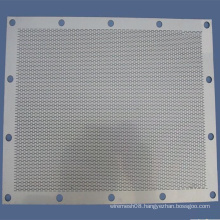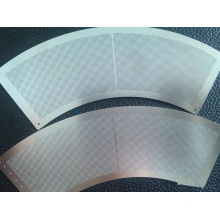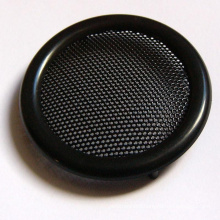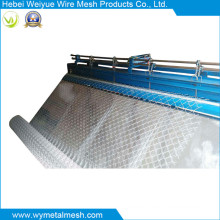Introduction of Black Amber Plum and High-yield Cultivation Techniques in Sandy Land
2021-08-22
In order to optimize the fruit structure of Qian’an City and increase the economic benefits of farmers, in August 1998, the black amber green branch scion was introduced from the Shandong Provincial Institute of Pomology and the buds were grafted onto the hairy cherries. The black amber seedlings of the cherry rootstock were cultivated. After five years of cultivation experiments, it has been successful. This variety has shown good performance with high yield, large size, beautiful appearance, sweet taste, high edible rate, and strong adaptability. The market price is 3.6-4 yuan/kg, and the development prospects are as follows: broad. The introduction of its introduction performance and high-yield cultivation techniques for dense planting in the sand are described below.
1. Basic condition of the test park The test park is located in the sandy land of the East Plain of Qianzhuang Village, Malanzhuang Town, Qian’an City, Hebei Province. It is a warm temperate and semi-humid monsoon climate. The annual average temperature is 11.5°C, and the annual precipitation is 711.9mm. Annual sunshine 2292.5h, frost-free period 198d. The soil of the test garden was sandy loam soil, with a pH of 7.5, a deep soil layer and a soil organic matter content of 0.37%. The test garden covers an area of 2 hectares. The main cultivar, black amber, accounts for 80%, the pollinated black sapphire accounts for 20%. It was planted in April 2000 with a row spacing of 3m. The plant spacing is 2m, and there are 111 trees per (667m2). The flowering rate was 39.3. %, In 2001, the average output per 667 square meters in 2002, 2003, and 2004 was 532.8 kg, 1731.6 kg, and 1798.2 kg, respectively. The black amber plum matured at the end of July to early August in Qian’an.
2. Introduction performance
2.1 Fruit Relief Characters Black Amber Plum Fruit is oblate and round, 6.1cm in diameter, average fruit weight 139.5g, maximum 166g, skin black and purple, with a layer of white waxy, pale yellow flesh, denser texture, tough and tender meat, Sweet taste, away from the core, oblate and extremely small, edible rate of 98.2%, superior quality.
2.2 Growth results Habits 1 to 3 years old The saplings are strong and the result is a moderate tree vigor. The 5-year-old canopy projected area was 4.5 square meters, which was 21.1% less than the projection area of the black amber plum crown on the medlar root stocks. It had obvious dwarfing effect. The bud rate is high, the branching rate is low, and flower buds are easily formed. The fruit setting rate is high, and the results are mainly short fruit branches and bouquet-like fruit branches, and the results are continuous, strong, and stable.
2.3 The phenology period in Qian'an City, Hebei Province, the black amber plum buds germinated at the end of March, early April early flowering, full flowering in mid-April and final flowering at the end of April. The fruit matures from the end of July to the beginning of August, and the fruit growth period is 90 days. Deciduous leaves begin in mid-October.
3, sandy planting high quality and high yield supporting cultivation techniques
3.1 Seedling cultivation In the period of June to July, collect fully matured cherry seeds, remove the flesh and wash it, and store it in a ventilated place. In November, the bottom layer plots were treated for 120 days. At the end of March of the following year, the mulching of the mulching film covered the seedlings, and after the emergence, the fertilizer and water management was strengthened. Before the end of June, budding was carried out. After the survival, cutting the anvil in time can cultivate Li Miao, a product produced in 1 year, and realize the gardening of the year when sowing. It can also be harvested in August, when the semi-finished Li Miao was cultivated, the second year of the spring an anther cut, and the 2-year-old Li Miao was cultivated and planted the next year.
3.2 Planting Planting trenches are used for site preparation and are required to be completed before the soil is frozen. Planting ditch in the north-south direction, width 1m, depth 80cm, row spacing 3m, the topsoil and heart and soil will be placed on both sides of the ditch when digging trenches, 15cm thick clay will be laid on the bottom and used as a water retention layer, and applied every 667m2 After the decomposed farmyard fertilizer is 5000kg, each of 30kg of phosphate fertilizer and potassium fertilizer is used. When fertilizing, the fertilizer is fully mixed with the topsoil, applied into the ditch, and then backfilled to protect the earth.
Before and after the Ching Ming Festival in spring, seedlings were planted timely when the buds were enlarged, and the first-stage seedlings with robust growth, complete root system, no pests and mechanical damage were selected, rooted before planting, and soaked for 24 h with 300-fold micronuclein compound fertilizer. When planting, raise the seedlings while burying the soil, so that the roots of the seedlings are stretched without curling, and after the water is poured practically, the water is finally sealed. It is best to ensure that the ground after sealing is 2~3cm higher than the original soil. In order to ensure survival, we can add drought-resistant and water-retaining agents by taking 10-20g of drought-resistant water-retaining agent and thoroughly mixing with 10-20kg of fine soil, and planting them around the roots when planting seedlings. The dry height is 60cm, and after drying, the top of the seedlings is covered with a plastic bag (40-505cm) to protect the insects. Under the tree, a tree tray with a low height of four sides is built and covered with a plastic film to increase the temperature and promote rooting.
3.3 Fertilizer and Water Management Newly planted seedlings survived for about 1 month. Each cultivating urea 50g promoted growth. From the second year onwards, three fertilizations were applied each year: fertilization before flowering, fertilization during fruit enlargement, and base fertilizer after autumn. Before flowering, the early fruit period tree applies 10~15kg urea per 667 square meters, 10~15kg ternary compound fertilizer, 20~30kg urea per 667 square meters of mature trees, and 20~30kg of ternary compound fertilizer to facilitate flowering and fruit setting. Fruit enlargement fertilizer Early fruit period tree applies Sanyuan compound fertilizer of 15kg per 667 square meters, Shengguo period of trees applies Sanyuan compound fertilizer of 30kg per 667 square meters; Base fertilizer is applied after fruit picking, and 5000kg of farmhouse fertilizer per 667 square meters. Foliar fertilizer applied in combination with spraying, spraying 0.3% to 0.5% urea solution twice in June, spraying 0.2% to 0.5% potassium dihydrogen phosphate solution twice in July, spraying 2 times in August Amino acid complex micro-fertilizer 300 times, every time 15d; rainy season pressure 1 green manure. In spring, the Qingshui and soil-frozen water are poured one time. The growing season will be watered according to flood conditions and the flood season will prevent flooding.
3.4 Pruning The tree shape is a slender shape. The height of this tree is 3m, and the height is 50cm. The center has 10 to 12 backbone branches. Black amber sprouts strong, weak branching, young trees should be lightly cut long, increase short branches. The extension branches of the stem branches and the central stem should be short cut to enlarge the crown. To stay more than support the branches, remove the dense branches. The branch opening angle is 60 to 70, and the auxiliary raising branch angle is 70 to 80. The pruning of fruit trees during the fruit period is mainly to retract and promote the rejuvenation of the branches. In the growing season, it takes 20~30cm from the new shoots, or 15~20d before the autumn shoots stop growing, and picks up the hearts; on the back branches, there is no space for the sparse, and there is space for 5~15cm short cuts to cultivate the results. Branches; thin and thin branches, dense branches, competing branches, pests and branches, etc. should be removed from the base; after the open angle, the auxiliary branches should be cut in multiple cycles from the end of May to the beginning of June, 2 to 3 each. Road, each interval of 5 ~ 10cm, in order to slow down the tree potential, increase short branches, promote flowering.
3.5 The management of flower and fruit combined with winter shear should properly remove dense and short fruiting branches and reduce nutrient consumption during flowering. Sparsely fruiting and thinning, it is best to spend sparsely flowering at the flowering stage, or to thin fruit when the young fruit grows to the size of the bean, to remove the deformed fruit, disease and fruit and weak fruit, and leave 3 to 4 fruit for the long fruit branch. Leave 2 to 3 fruits in the middle fruit branch and 1 fruit in the short fruit branch to achieve a reasonable load. The fruit amount per 667 square meters in the fruit period is 10,000.
3.6 Pest control The main insect pests of black amber plum are aphids and red spiders. The main disease is bacterial perforation. We must adhere to prevention as the main integrated prevention and control, combine winter shearing, clear orchards during dormancy, remove debris, dead and fallen trees, fallen fruits, fallen leaves, and other debris, centralize burning or deep burial, and reduce the overwintering base number of pests and diseases. During the growing season, we must do a good job in forecasting, timely and rational use of drugs, promote the use of highly effective and low-toxicity pesticides, and eliminate the use of highly toxic pesticides. Before sprouting, the whole park sprayed 3 to 5% lime sulfur mixture to kill bacteria and insecticides. After Xiehua spray 3000 times 10% imidacloprid to control aphids, at the end of May, the whole park sprayed zinc sulfate lime solution (zinc sulfate: lime: water =1:4:240), every 15 days, for 4 to 5 times, can prevent bacterial perforation, spray 20% of dying net 3000 times or 1.8% of Qishensu 4000 times or 30% of EC Mothedoxin 2000 times liquid can control red spider, spray 25% diflubenzuron 3 1000 times can control all kinds of leaf roller moths and leaf miners, spray 30% peach Xiaoling 2000 times liquid can prevent Peach borer. After defoliation, it is necessary to carry out white coating. White coating can not only reduce the temperature difference between day and night, prevent and reduce frost damage and daily burning, but also prevent and treat diseases and insect pests that overwinter on branches. The ratio of mixture is lime:lime mixture:salt:water=5: 1:1:20, little clay. Spread the prepared whitening agent evenly on the trunk without flowing down. Be careful not to coat the shoots to avoid burning the buds. It is generally good to coat 2 times, the first time after the fall to the soil before freezing, the second time in early spring.
Author unit: Agricultural Office of Malan Town, Qian’an City, Hebei Province
Construction safety net also called Scaffold net, Debris net,using construction net surround whole building. In the construction of multistory buildings such as skyscrapers, it is necessary to install temporary vertical safety barriers at the edges of the various floors to prevent tools and construction materials such as rods, bricks, pipes and nails from falling from the floors and endangering people and property on underlying levels, including the ground surface. Scaffolding Net is necessary for building construction.Construction building net material are HDPE,PE with UV protection. Construction Safety Net sheets main export market has Asia, Middle East,Australasia, Central/South America,Europe,Africa,North America.
Fall Arrest Safety Net, Black Scaffolding Netting, Scaffold Protection Netting, Black Debris Net
Xinlong Wire Mesh Manufacture Co., Ltd. http://www.penettings.com





